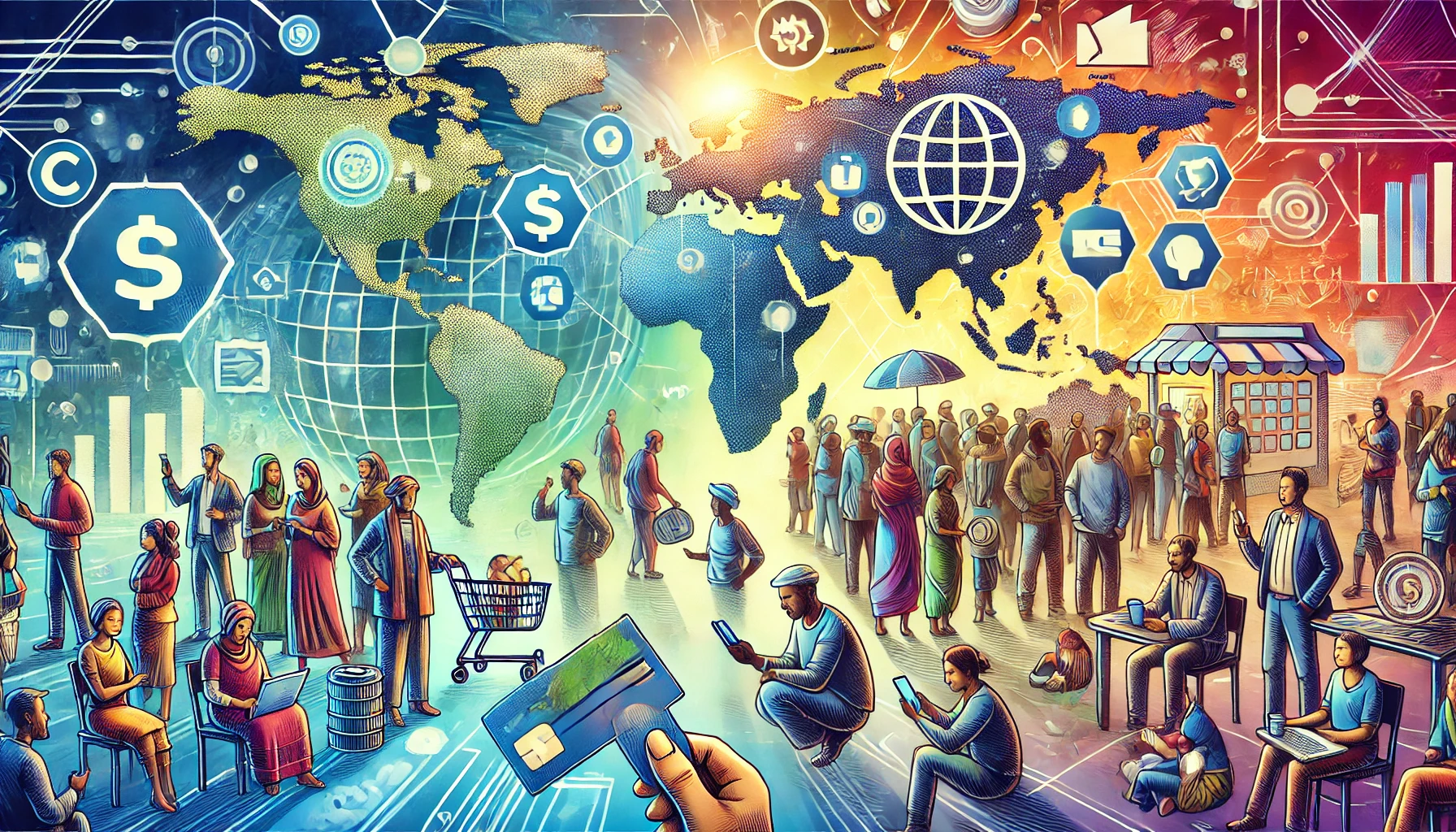How FinTech is Revolutionizing Financial Inclusion: Closing the Gap for the Unbanked

A World Without Banks: The Unseen Struggle of the Unbanked
Imagine living in a world where your only bank is a shoebox under your bed. While that may sound like a great way to avoid overdraft fees, it’s not exactly ideal for paying bills, starting a business, or even building savings. This is the reality for over 1.7 billion people worldwide who are unbanked or underbanked. These individuals lack access to basic financial services like checking accounts, loans, or even digital payment systems. But don’t worry — that’s where FinTech companies swoop in like the superheroes of the financial world, using technology to bridge the gap and create opportunities for those previously left out of the system.
The Rise of FinTech: Supercharging Financial Services
FinTech companies have completely reshaped the financial landscape by leveraging the power of technology to offer services to those who have long been ignored by traditional banking. From mobile banking apps to digital wallets, they’ve made it easier than ever for people to access and manage their money. In places like Kenya, where over 80% of the population doesn’t have a traditional bank account, mobile money services like M-Pesa have become the lifeblood of the economy. Using just a basic cellphone, people can now send money, pay bills, and even take out loans. It’s like having a full-service bank in your pocket, without ever setting foot in an actual bank.
Success Stories: How FinTech is Changing Lives
Across the globe, FinTech companies are making waves. In India, Paytm and other digital payment platforms have transformed the way people handle their finances. No longer limited by physical banks, millions of Indians can now transfer money, pay for groceries, and even invest in stocks right from their smartphones. In Nigeria, Flutterwave has enabled businesses to accept payments from anywhere in the world, fueling the growth of e-commerce in the region. And then there’s Tala, a company using data from smartphones to provide loans to people without credit histories in countries like Mexico and the Philippines. These success stories show that FinTech is not just a trend; it’s a tool that’s empowering people and lifting them out of poverty.
The Potential of FinTech in Developing Economies
Developing economies stand to gain the most from FinTech-driven financial inclusion. In regions where access to banking infrastructure is limited, mobile banking and digital payments have become a lifeline. For many small business owners, particularly women, FinTech solutions offer the opportunity to grow their enterprises by providing easy access to credit and financial services. This, in turn, boosts economic development, reduces inequality, and promotes entrepreneurship. Imagine a woman in rural Africa who can now receive payments for her small business and invest in inventory, all thanks to a mobile payment app. That’s the magic of FinTech in action.
Challenges Ahead: The Roadblocks to Full Financial Inclusion
While FinTech has certainly made significant strides, it’s not all smooth sailing. There are still major challenges to achieving full financial inclusion. For one, internet access remains a barrier in many parts of the world. Without reliable connectivity, digital services remain out of reach for those who need them the most. Then there’s the issue of financial literacy — many unbanked individuals simply don’t have the knowledge to navigate these new technologies. Finally, regulatory hurdles often prevent FinTech companies from expanding their services across borders. But despite these obstacles, the future looks bright as governments and private companies alike are working together to close these gaps.
Looking Ahead: The Future of FinTech and Financial Inclusion
So, what does the future hold for FinTech and financial inclusion? As technology continues to advance, the potential to bring more people into the financial fold grows. Innovations in blockchain, AI, and big data are already shaping the next wave of financial services. Imagine a world where your financial history is stored securely on the blockchain, or where AI-powered apps can instantly approve loans with just a few taps. The possibilities are endless, and we’re only scratching the surface. The real challenge will be ensuring that these technologies are accessible to everyone, not just those with the latest smartphone or the best Wi-Fi connection.
Final Thoughts: Can FinTech Truly Close the Gap?
FinTech has already made huge strides in promoting financial inclusion, but the question remains: can it truly close the gap for the unbanked? While the technology is there, the implementation and adoption are still works in progress. For FinTech to reach its full potential, there needs to be a concerted effort to address the digital divide, improve financial literacy, and adapt regulatory frameworks to encourage innovation. But with continued collaboration between the private sector, governments, and communities, we may one day live in a world where everyone, regardless of location or income, has access to the financial services they need to thrive. What do you think? Will FinTech be the game-changer we’ve all been waiting for, or is there more work to be done?



